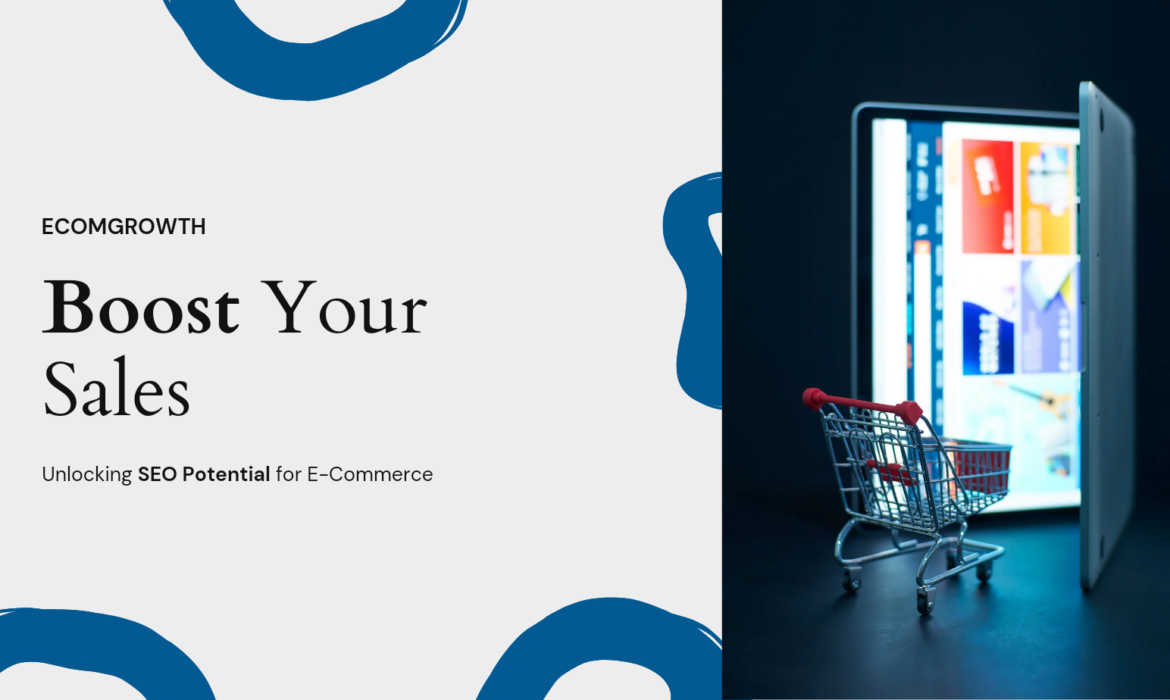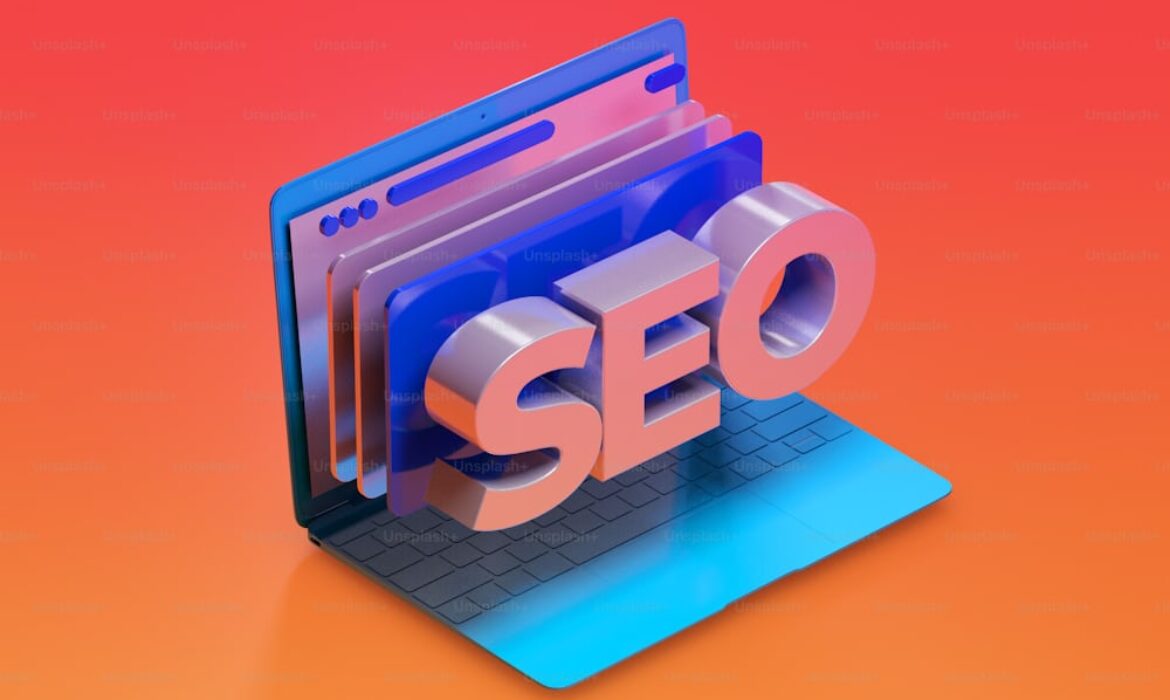081-4797-7173
The Importance of SEO for E-Commerce Product Pages
In the competitive world of e-commerce, having a great product isn’t enough to drive sales. With millions of products online, how do you ensure that your items stand out and reach your target audience? The answer lies in Search Engine Optimization (SEO).
SEO is not just about ranking your homepage or category pages it’s equally crucial for your product pages. Optimized product pages not only help you rank higher in search engine results but also improve user experience, ultimately driving more traffic, engagement, and conversions.

This blog explores the importance of SEO for e-commerce product pages and provides actionable strategies to optimize them effectively.
Why SEO Matters for Product Pages
1. Increases Visibility and Traffic
When a customer searches for a product on Google or another search engine, they’re presented with hundreds, if not thousands, of options. Optimizing your product pages ensures that your listings appear on the first page of search results, increasing the likelihood of clicks and traffic.
2. Attracts High-Intent Shoppers
Unlike general searches, product searches often come from users who are ready to buy. For instance, a search query like “buy wireless headphones” indicates a strong purchasing intent. By optimizing your product pages, you position yourself to capture these high intent shoppers.
3. Improves Conversion Rates
SEO isn’t just about bringing traffic it’s about bringing the right traffic. When your product pages are tailored to specific search terms, visitors are more likely to find exactly what they’re looking for, leading to higher conversion rates.
4. Enhances User Experience
Optimized product pages provide a seamless shopping experience by delivering accurate, well-organized, and engaging content. This improves customer satisfaction and increases the chances of repeat purchases.
5. Builds Brand Credibility
Ranking high in search results for your products builds trust and credibility with your audience. Customers are more likely to buy from brands they perceive as authoritative and reliable.
Key Elements of Product Page SEO
1. Keyword Research
Keyword research is the foundation of any SEO strategy. Identify terms your target audience is using to search for products similar to yours.
Use Tools Like:
Google Keyword Planner
Ahrefs
SEMrush
Ubersuggest
Types of Keywords to Target:
Short-tail keywords: wireless headphones
Long tail keywords: best wireless headphones under $50
Transactional keywords: buy wireless headphones online
Incorporate these keywords naturally into your product title, description, meta tags, and image alt text.
2. Write Compelling Product Titles
Your product title is one of the first things search engines and customers notice.
Best Practices for Product Titles:
Include primary keywords.
Make it descriptive yet concise (50–60 characters).
Avoid keyword stuffing.
For example, instead of “Headphones,” use “Wireless Bluetooth Headphones with Noise Cancellation.”
3. Optimize Product Descriptions
A well-written product description not only helps search engines understand your product but also persuades customers to make a purchase.
Tips for Writing Product Descriptions:
Highlight unique selling points (USPs).
Use keywords naturally.
Focus on benefits, not just features.
Avoid duplicate content by writing unique descriptions for each product.
Example:
“Experience unparalleled sound quality with our Wireless Bluetooth Headphones. Designed with advanced noise cancellation technology, these headphones are perfect for work, travel, and entertainment. Lightweight and durable, they offer up to 20 hours of battery life on a single charge.”
4. Optimize Images for SEO
Images play a crucial role in e-commerce, but they need to be optimized for both SEO and user experience.
How to Optimize Images:
Use descriptive file names (e.g., wireless-headphones-black.jpg).
Add alt text with keywords.
Compress images to reduce page load time.
Use high-quality images that showcase the product from multiple angles.

5. Leverage Structured Data
Structured data (schema markup) helps search engines understand your product pages better and enhances their appearance in search results.
Types of Schema to Use:
Product schema: Includes details like price, availability, and reviews.
FAQ schema: Answers common customer questions.
Review schema: Displays star ratings in search results.
Adding structured data can increase your click-through rate (CTR) and drive more traffic to your site.
6. Improve Page Load Speed
Page speed is a critical ranking factor for SEO and impacts user experience.
How to Improve Page Speed:
Compress images and videos.
Minimize the use of heavy scripts.
Use a Content Delivery Network (CDN).
Enable browser caching.
Faster pages lead to lower bounce rates and higher conversions.
7. Encourage User-Generated Content
Reviews, ratings, and customer photos add credibility and improve SEO.
Benefits of User-Generated Content (UGC):
Increases keyword diversity.
Enhances social proof.
Encourages customer engagement.
Make it easy for customers to leave reviews by sending follow-up emails or offering incentives.
8. Optimize for Mobile Users
With more shoppers browsing and buying on mobile devices, mobile optimization is non-negotiable.
Mobile SEO Tips:
Use a responsive design.
Ensure buttons and links are easy to click.
Optimize page speed for mobile.
Test your site on multiple devices.
9. Use Internal Linking
Internal links guide users to related products or categories, improving site navigation and SEO.
Best Practices:
Link to similar or complementary products.
Use descriptive anchor text.
Avoid overloading pages with too many links.
10. Monitor and Optimize Regularly
SEO isn’t a one-time task. Continuously monitor your product pages to ensure they remain optimized.
Track Metrics Like:
Click-through rates (CTR).
Conversion rates.
Bounce rates.
Keyword rankings.
Use tools like Google Analytics and Google Search Console for insights.
Conclusion
SEO for e-commerce product pages is an essential strategy for driving traffic, enhancing user experience, and boosting sales. By optimizing your product titles, descriptions, images, and other elements, you not only improve your search engine rankings but also create a seamless shopping experience for your customers.
Remember, the ultimate goal of SEO isn’t just to bring traffic it’s to attract the right traffic and convert visitors into loyal customers. Start optimizing your product pages today, and watch your e-commerce business thrive in the competitive digital marketplace.
How To Use Social Proof To Increase Conversions

In the world of digital marketing, building trust with potential customers is one of the most effective ways to drive conversions.
One powerful tool for achieving this is social proof. Social proof leverages the influence of others’ actions, opinions, and experiences to encourage new customers to take action, whether that’s making a purchase, signing up for a service, or subscribing to a newsletter.
This blog will dive into the concept of social proof, why it works, and how you can strategically implement it to increase conversions for your business.
What is Social Proof?
Social proof is a psychological phenomenon where people look to others’ behavior or feedback to guide their own decisions, especially in uncertain situations.
For instance:
A product with hundreds of glowing reviews is perceived as more trustworthy.
Restaurants with long lines or packed seating are seen as popular and worth trying.
When applied to digital marketing, social proof serves as an endorsement from your existing customers, influencers, or even large-scale media outlets, which can nudge potential buyers toward conversion.
Why Does Social Proof Work?
The power of social proof lies in its ability to create trust and reduce hesitation.
Here’s why it’s so effective:
1. Validation: People tend to trust the actions and opinions of others, especially when they feel uncertain about a decision.
2. Fear of Missing Out (FOMO): When customers see others benefiting from a product or service, they don’t want to miss out on the same experience.
3. Trust Building: Reviews, testimonials, and endorsements help reassure potential buyers that your product or service is worth their investment.
Types of Social Proof
Social proof comes in various forms, and using a combination of them can significantly enhance your conversion rates.
1. Customer Reviews and Ratings
Why It Works: Positive reviews from real customers build trust and confidence in your product.
How to Use:
Display customer reviews on product pages and your homepage.
Highlight average star ratings prominently.
Use platforms like Yelp, Google Reviews, or Trustpilot to collect and showcase testimonials.
2. Testimonials
Why It Works: Direct quotes from satisfied customers make your brand relatable and trustworthy.
How to Use:
Include testimonials on your landing pages, sales pages, and email campaigns.
Use video testimonials for added authenticity.
3. Influencer Endorsements
Why It Works: Influencers bring credibility and access to their loyal audience.
How to Use:
Partner with influencers to create authentic content featuring your product.
Showcase these endorsements on your website and social media channels.
4. Case Studies and Success Stories
Why It Works: Demonstrating real world success shows the tangible value of your product.
How to Use:
Publish case studies that outline specific challenges and how your product solved them.
Include metrics and before and after comparisons for added impact.
5. Social Media Proof
Why It Works: User generated content (UGC) and social engagement showcase your brand’s popularity.
How to Use:
Repost UGC like photos, videos, or reviews from your customers.
Highlight your social media following, shares, or likes.
6. Trust Seals and Certifications
Why It Works: Logos from trusted organizations or security certifications reassure potential buyers.
How to Use:
Display trust badges such as “Verified Buyer,” “Secure Checkout,” or “Money Back Guarantee.”
Highlight certifications or awards your brand has received.
7. Real Time Data and Statistics
Why It Works: Showing live updates or numbers creates urgency and credibility.
How to Use:
Use widgets to show how many people are currently viewing a product or have recently purchased it.
Display numbers of satisfied customers or successful deliveries.
How to Use Social Proof Effectively
1. Understand Your Audience
Different types of social proof resonate with different audiences. For example:
Millennials and Gen Z often trust UGC and influencer endorsements.
Professionals may prefer case studies or expert reviews.
2. Be Authentic
Fake reviews or overly polished testimonials can backfire. Ensure all social proof is genuine and relatable.
3. Highlight Social Proof at Key Touchpoints
Homepage: Use testimonials or trust badges to create a strong first impression.
Product Pages: Include reviews, ratings, and UGC to reassure buyers.
Checkout Pages: Display trust seals or testimonials to reduce cart abandonment.
4. Create Shareable Moments
Encourage customers to share their experiences with your brand on social media by offering incentives like discounts or shoutouts.
5. Leverage Scarcity and Urgency
Combine social proof with scarcity tactics, such as:
“Only 3 items left in stock!”
“10 people are viewing this product right now.”
6. Use Visuals
Visual content like photos, videos, and infographics can make social proof more compelling.
For instance:
Show images of customers using your product.
Use charts or graphs in case studies to illustrate success.
7. Regularly Update Social Proof
Outdated reviews or case studies can lose their impact. Keep your testimonials, stats, and certifications current.
Benefits of Using Social Proof
1. Builds Trust Quickly: Potential customers are more likely to trust your brand when others endorse it.
2. Increases Conversion Rates: Social proof reduces hesitation and encourages users to complete their purchases.
3. Enhances Brand Credibility: A strong portfolio of testimonials, reviews, and certifications positions your brand as a trusted authority.
4. Boosts Customer Retention: Positive reviews and UGC build a community around your brand, fostering loyalty.
Conclusion
Social proof is a powerful tool that can significantly impact your conversion rates when used strategically.
By showcasing reviews, testimonials, endorsements, and other forms of validation, you create an environment of trust and credibility that encourages customers to take action.
Start integrating social proof into your marketing efforts today and watch as your brand gains more trust, engagement, and conversions.
Top 5 SEO Trends You Need to Watch Out For This Year
The world of Search Engine Optimization (SEO) is constantly evolving. With frequent algorithm updates from search engines like Google and changes in user behavior, keeping up with the latest trends is essential for staying ahead of the competition.
This year, several key trends are reshaping the SEO landscape. Whether you’re an experienced marketer or a business owner looking to improve your website’s visibility, understanding these trends will help you craft a winning strategy.
Let’s dive into the top 5 SEO trends to watch out for this year
1. Focus on EEAT: Expertise, Experience, Authority, and Trustworthiness
Google’s E E A T (Expertise, Experience, Authority, and Trustworthiness) framework is more crucial than ever for ranking success. This principle ensures that the content you produce is credible, reliable, and written by subject-matter experts.
Google prioritizes websites that provide high quality, well researched, and authoritative information, especially in sensitive niches like health, finance, and law.
How to Implement EEAT in Your Strategy:
- Showcase Author Expertise: Add author bios to your content to highlight their credentials and experience.
- Use Reliable Sources: Link to authoritative sources in your content to back up your claims.
- Build Trust Signals: Include customer reviews, testimonials, and certifications on your site.
- Keep Your Content Up to Date: Regularly update your existing posts to reflect the latest information and trends.
Investing in EEAT not only helps your rankings but also builds trust with your audience.
2. AI and Machine Learning Integration in Search
Artificial Intelligence (AI) is changing the way search engines operate. Google’s RankBrain and other machine learning algorithms analyze user intent more effectively, delivering precise results based on search behavior. AI-powered tools like ChatGPT are also transforming content creation and keyword research.
Key Takeaways for SEO:
- Optimize for Search Intent: Understand the “why” behind user queries to create content that meets their needs.
- Leverage AI Tools: Use AI driven platforms for keyword analysis, content generation, and performance insights.
- Voice Search Optimization: With AI advancements, voice search is becoming more common. Optimize for natural language queries and long tail keywords.
Staying ahead of AI trends ensures your strategy aligns with how search engines and users interact with content.
3. Core Web Vitals and User Experience
Core Web Vitals remain a significant ranking factor, emphasizing the importance of website performance and user experience (UX). These metrics measure a website’s speed, responsiveness, and visual stability.
Websites with excellent Core Web Vitals scores not only rank higher but also retain more visitors.
Core Web Vitals to Monitor:
- Largest Contentful Paint (LCP): Measures loading performance. Aim for a load time under 2.5 seconds.
- First Input Delay (FID): Tracks interactivity. Ensure response times are less than 100 milliseconds.
- Cumulative Layout Shift (CLS): Measures visual stability. Keep layout shifts below 0.1.
How to Improve Core Web Vitals
Here are some tips on how to improve your core web vitals:
- Optimize images and use modern formats like WebP.
- Minimize JavaScript and CSS.
- Leverage a Content Delivery Network (CDN) to improve server response times.
- Ensure mobile friendliness and test usability across devices.
Prioritizing user experience through Core Web Vitals not only boosts rankings but also enhances audience satisfaction.
4. The Rise of Visual and Video Search
The way people search for information is expanding beyond text. Visual and video searches are gaining traction, driven by platforms like Google Lens, Pinterest, and YouTube.
Users now search by uploading images or asking for specific video content. Optimizing for these mediums can open new opportunities for visibility.
How to Optimize for Visual and Video Search
Some tips you can you utilise to optimize for visual and video search:
- Use Descriptive Alt Text: Add detailed alt text to all images on your site.
- Structured Data Markup: Implement schema for videos to help search engines understand and display your video content.
- Create Video Content: Invest in high quality, engaging video content tailored to your audience’s interests.
- Optimize Thumbnails: Use eye catching thumbnails for videos to encourage clicks.
With the popularity of short form video platforms like TikTok and Instagram Reels, video SEO is a trend you can’t afford to ignore.
5. Zero Click Searches and Featured Snippets
Zero click searches are becoming more prevalent, with users finding answers directly on the search engine results page (SERP) without clicking through to a website.
Featured snippets, People Also Ask boxes, and local packs contribute to this trend. Optimizing for zero click searches ensures your content remains visible, even if clicks are limited.
How to Capture Featured Snippets:
- Answer Questions Concisely: Provide direct answers to common queries in your content.
- Use Lists and Tables: Search engines often feature structured formats like bulleted lists or tables in snippets.
- Focus on Long Tail Keywords: Target specific, question based keywords to align with voice and text queries.
- Format Content for People Also Ask: Use FAQs and subheadings that mimic common user questions.
While zero click searches may reduce traffic, they position your brand as a trusted source of information.
Conclusion
Stay Agile in a Dynamic SEO Landscape
SEO is no longer just about keywords and backlinks; it’s about understanding user intent, delivering value, and adapting to new technologies.
By focusing on E E A T principles, integrating AI, improving user experience, embracing visual search, and optimizing for zero click searches, you can future proof your strategy and stay competitive.
This year, SEO is as much about building trust and authority as it is about driving traffic. Stay informed, experiment with new techniques, and always prioritize the needs of your audience.
Following these trends will ensure you remain visible, relevant, and successful in the ever changing search landscape.
This blog provides a comprehensive guide to the latest SEO trends, helping businesses navigate the complexities of modern search optimization.
The Role of Influencer Marketing in E-commerce: Driving Growth and Engagement
In the fast paced world of e commerce, businesses are constantly seeking innovative ways to engage their audience, build trust, and boost sales. One strategy that has proven to be highly effective is influencer marketing.
By leveraging the reach and credibility of influencers, brands can connect with their target audience in authentic and impactful ways.
This article explores the role of influencer marketing in ecommerce, its benefits, and actionable tips for creating successful campaigns.
What is Influencer Marketing?
Influencer marketing involves collaborating with individuals who have a significant following on social media platforms or blogs to promote your products or services.
These influencers have built trust with their audience, making their recommendations highly persuasive.In ecommerce, influencers serve as a bridge between brands and potential customers, driving awareness, engagement, and conversions.
Why is Influencer Marketing Important for Ecommerce?
1. Builds Trust and Credibility
Consumers are more likely to trust recommendations from someone they follow and admire than from traditional advertisements. Influencers act as relatable voices for your brand, showcasing your products in real-life contexts that resonate with their audience.
2. Reaches Targeted Audiences
Influencers cater to specific niches, such as fashion, fitness, beauty, or technology. Partnering with influencers in your niche ensures your products reach a highly targeted audience, increasing the likelihood of conversions.
3. Increases Brand Awareness
Influencer collaborations can introduce your brand to a wider audience. Whether through Instagram posts, TikTok videos, or YouTube reviews, influencers can generate buzz, helping you gain visibility in a crowded marketplace.
4. Drives Conversions and Sales
Influencers often provide product demonstrations, reviews, or tutorials, giving their followers a clear understanding of the product’s value. This authentic content significantly influences purchasing decisions.
5. Cost-Effective Marketing
Compared to traditional advertising, influencer marketing offers a more cost-effective way to promote products, especially for small businesses. Micro and nano influencers, in particular, deliver high engagement rates at a lower cost.
The Key Roles of Influencers in Ecommerce
1. Content Creators
Influencers are skilled content creators who produce visually appealing and engaging posts, videos, and stories. Their creativity adds value to your brand and ensures that promotional content doesn’t feel like a hard sell.
2. Brand Advocates
When influencers genuinely love your product, they become loyal advocates, promoting your brand repeatedly. This sustained advocacy builds longterm customer loyalty.
3. Traffic Drivers
Through links in bio, swipe up features, and affiliate links, influencers can direct their audience to your ecommerce website, increasing traffic and potential sales.
4. Social Proof Providers
When an influencer endorses your product, it serves as social proof, reassuring potential customers that your brand is credible and trustworthy.
How to Leverage Influencer Marketing for Ecommerce Success
1. Define Your Goals
Before launching a campaign, identify your objectives. Are you looking to increase brand awareness, drive website traffic, or boost sales? Clear goals help you measure success.
2. Choose the Right Influencers
Select influencers whose values align with your brand and whose audience matches your target demographic. Use tools like BuzzSumo, Upfluence, or social media analytics to identify suitable candidates.
3. Create Authentic Collaborations
Avoid overly scripted content. Let influencers present your product in their unique style to maintain authenticity and trust with their audience.
4. Offer Exclusive Discounts and Codes
Provide influencers with unique discount codes or affiliate links. This incentivizes their followers to make purchases while allowing you to track campaign performance.
5. Leverage Multiple Platforms
Don’t limit yourself to one social media platform. Utilize Instagram, TikTok, YouTube, and even blogs to reach diverse audiences.
6. Monitor and Optimize
Track key metrics like engagement rates, website traffic, and sales generated from influencer campaigns. Use this data to refine your strategy for future collaborations.
Challenges of Influencer Marketing in E-commerce.
While influencer marketing offers numerous benefits, it’s not without challenges:
Fake Followers: Ensure influencers have genuine followers by analyzing their engagement rates.
Finding the Right Fit: Partnering with the wrong influencer can result in wasted resources.Content Authenticity: Overly promotional content may fail to resonate with audiences.To overcome these challenges, conduct thorough research and maintain open communication with influencers.
The Future of Influencer Marketing in E-commerceInfluencer marketing is continuously evolving. Emerging trends like live shopping, AI-generated influencers, and nano influencers are reshaping the landscape.







